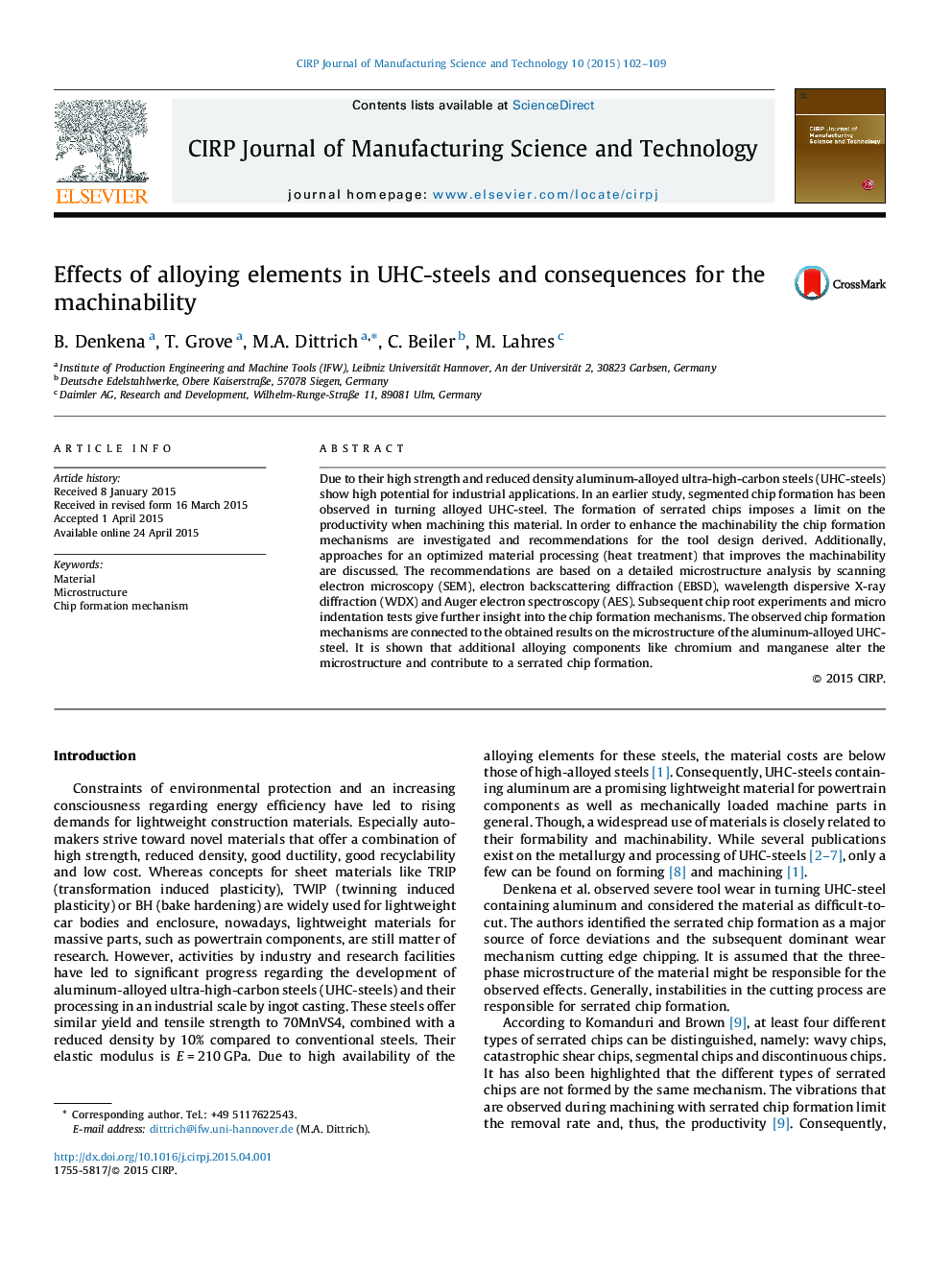| Article ID | Journal | Published Year | Pages | File Type |
|---|---|---|---|---|
| 1679538 | CIRP Journal of Manufacturing Science and Technology | 2015 | 8 Pages |
Due to their high strength and reduced density aluminum-alloyed ultra-high-carbon steels (UHC-steels) show high potential for industrial applications. In an earlier study, segmented chip formation has been observed in turning alloyed UHC-steel. The formation of serrated chips imposes a limit on the productivity when machining this material. In order to enhance the machinability the chip formation mechanisms are investigated and recommendations for the tool design derived. Additionally, approaches for an optimized material processing (heat treatment) that improves the machinability are discussed. The recommendations are based on a detailed microstructure analysis by scanning electron microscopy (SEM), electron backscattering diffraction (EBSD), wavelength dispersive X-ray diffraction (WDX) and Auger electron spectroscopy (AES). Subsequent chip root experiments and micro indentation tests give further insight into the chip formation mechanisms. The observed chip formation mechanisms are connected to the obtained results on the microstructure of the aluminum-alloyed UHC-steel. It is shown that additional alloying components like chromium and manganese alter the microstructure and contribute to a serrated chip formation.
